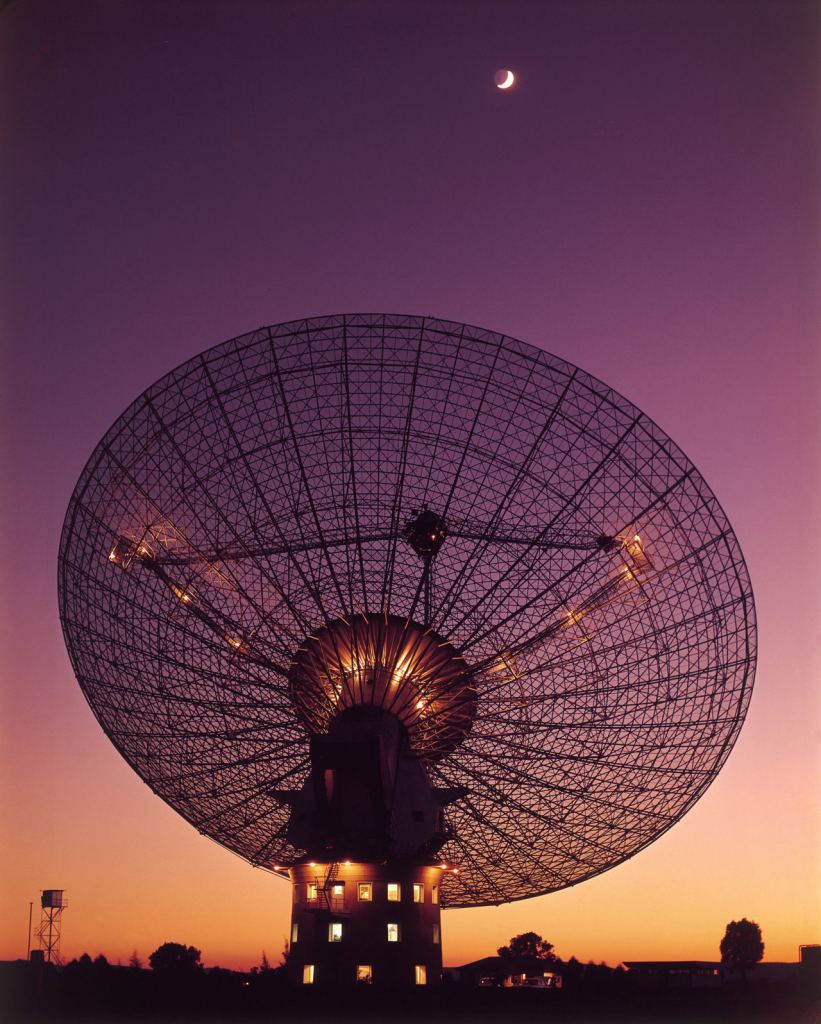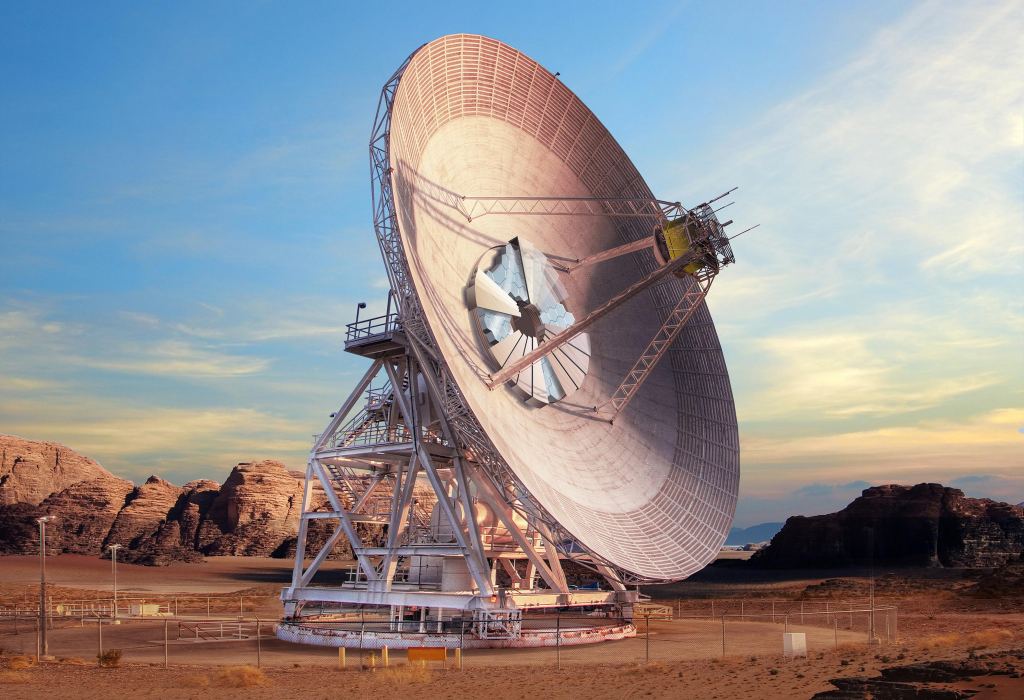If humans want to travel about the solar system, they’ll need to be able to communicate. As we look forward to crewed missions to the Moon and Mars, communication technology will pose a challenge we haven’t faced since the 1970s.
We communicate with robotic missions through radio signals. It requires a network of large radio antennas to do this. Spacecraft have relatively weak receivers, so you need to beam a strong radio signal to them. They also transmit relatively weak signals back. You need a large sensitive radio dish to capture the reply. For spacecraft beyond the orbit of Earth, this is done through the Deep Space Network (DSN), which is a collection of radio telescopes custom designed for the job.

The only major crewed mission we currently have is the International Space Station (ISS). Since the ISS orbits only about 400 kilometers above the Earth, it’s relatively easy to send radio signals back and forth. But as humans travel deeper into space, we’ll require a Deep Space Network far more powerful than the current one. The DSN is already being pushed to its data limits, given the large number of active missions. Human missions would require orders of magnitude more bandwidth.
For the Apollo missions to the Moon, NASA developed a new radio communication system known as the Unified S-band or USB. Earlier low orbit missions used separate radio channels for voice, telemetry, and tracking data. Radio telescopes at the time weren’t sensitive enough to capture this independent data from lunar distances, so USB combined them into a single data stream. But even this wasn’t powerful enough to capture video signals from the Moon. It took the Parkes radio telescope, one of the largest and most sensitive radio antennas at the time, to capture the blurry, low-resolution videos of the first Moon landing.

When we return to the Moon and place our first footsteps on Mars, we will want not only scientific data but live video feeds, high-resolution images, and even tweets from the astronauts. Imagine trying to stream gigabytes of data between Earth and Mars. Even the most sophisticated radio network isn’t capable of that level of bandwidth. While NASA is working on modern radio designs, radio communication might not meet all our needs.
A new study looks at an alternative. It uses visible light rather than radio. While visible light can carry more data due to its shorter wavelengths, it also scatters more readily and loses fidelity over a shorter distance. To overcome this, the team proposes combining the signal with a second reference signal. The whole thing is then passed through a non-linear optical fiber, which generates a third signal known as an idler wave. All three of these are then amplified and sent on their way. On the other end, the signals are captured and processed. Because the idler wave depends on the other two signals, it can be used to reconstruct the original signal without much data loss. In lab experiments, the team reached a data-rate of more than 10Gb/s, which is ten times higher than current technology.
This work is still highly experimental, so it’s too early to tell if it will solve the challenges of human space exploration. But who knows, it might just be the technology that lets astronauts send Instagram selfies from another world.
Reference: Kakarla, R., Schröder, J. & Andrekson, P.A. “One photon-per-bit receiver using near-noiseless phase-sensitive amplification.” Light: Science & Applications Vol. 9, no. 153 (2020)

